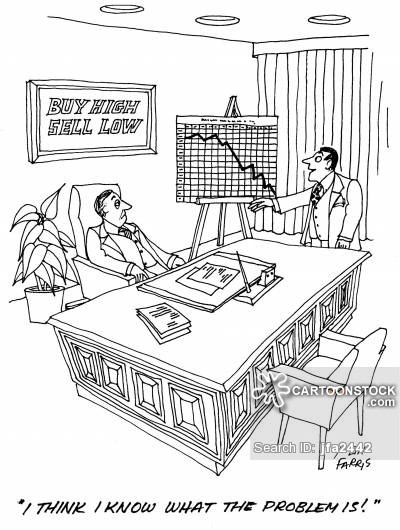Speculative Stocks and the Art of Stock Speculation
Post on: 27 Август, 2015 No Comment

Written on 23 December 2011 by Kris Sayce
There are two questions that have befuddled investors for years.
When is the best time to buy stocks?
And, when is the best time to sell stocks?
Neither question has ever been and probably never will be finally answered.
The reason these questions will stay unanswered is that theres no single best time to buy and sell stocks.
When you’re dealing with speculative stocks that’s where the art of stock speculation comes into play.
Because at any point in time, a stock is a buy or a sell. Its just a question of the size of the return you expect. Lets explain it this way using a homemade chart we published in the January 2011 issue of Australian Small-Cap Investigator .
We call it the
Small-Cap Effect
Source: Australian Small-Cap Investigator
Simply put, all stocks, but especially small-cap stocks go through a series of ups and downs. But contrary to what some people think, these price moves arent random. They are affected by investor hopes for a stock.
For instance, an investor who buys a speculative stock early while its still trading for 3 cents per share (point 1 on the chart), has a different attitude to a new investor who paid 50 cents per share (point 2 on the chart).
If the share price stays at 50 cents the second investor will break even. If it goes to 60 cents, the investor will make a 20% gain. On the other hand, the first investor has made a 1,566% gain at 50 cents, but could turn it into a 1,900% gain if it goes to 60 cents.
The point is, which investor is more likely to sell first if the share price doesnt go up? The first or second investor? The truth is, we dont know. Individual investors think for themselves, so theres no way of knowing exactly who would do what.
But what we do know is that when the investor outlook changes, speculative stocks will fall.
Until they reach a point where investors are prepared to buy (point 3 on the chart). Because now those investors still believe the stock will go to 60 cents. But instead of paying 50 cents for a 20% return theyre now able to pay say 10 cents for a 500% return.
The thing is, nothing about the company has changed. All thats changed is investor sentiment. They wont now pay 50 cents for a stock worth 60 cents, but they will pay 10 cents.
Early, Late and Next Stage Investors of Speculative Stocks
We call it the small-cap effect because its something that happens to small-cap stocks all the time. Take old-time Australian Small-Cap Investigator stock tip, Lynas Corporation [ASX: LYC] .
It was a stock tipped in Australian Small-Cap Investigator as long ago as 2008. You can see how the small-cap effect has worked on Lynas over the past five years:
The numbers on the chart arent anything to do with technical analysis. Were simply using these numbers as reference points to explain the small-cap effect where at Point 1 you get early investors. At Point 2 in come the late investors. And at Point 3 you get the next stage Investors as speculators figure out if the price is cheap or still too expensive.
During that time, Lynas Corp has traded as low as 10 cents and as high as $2.70. Today its trading for $1.15. Yet over the five years, whats changed?
Its still a rare earths company. It still has the same big hole in the ground today as it did three years ago. Its still trying to get approval for a processing plant in Malaysia. And its still trying to make a buck by busting the Chinese stranglehold for rare earths.

OK, it has built the Malaysian processing plant but its now held up due to potential environmental delays. And another thing to change is the rare earths price which has gained 663% in three years although the price has dropped 42% from this peak in just the past two months.
But aside from that, the main thing that changes is investor attitudes. Punters may have thought the Lynas share price would go higher in 2011, but they didnt want to pay $2.70 for the privilege of owning it.
So today its back to $1.15 and the price is levelling off. This is where punters start figuring out if the stock is cheap or whether its still expensive.
However, theres one other thing to note. Lynas is no more profitable today than it was in 2009. But that didnt stop the share price gaining 2,600% in two years.
The Art of Stock Speculation Thats the real art of small-cap stock speculation. You dont have to wait around until the company makes money. In fact, you could argue thats the last thing you want to do.
Because by the time it gets to the real money-making stage, most of the risk of investing in the company has gone. Thats when the company becomes a safe blue-chip. perhaps even paying out a dividend .
If you want to make the big returns, the best time to get in is early on (points 1 on the chart). This is when the speculative stock is at its most risky. But its also where you get the biggest returns.
Whether the company ever makes a dollar of profit while you own the stock is irrelevant. What you need to do is see the potential and get in early. Its how we played the silver story in late 2009, getting in to a silver stock while the silver price was still low.
And its how we tipped natural gas stocks in 2008 and today were taking a similar approach. In the December issue of Australian Small-Cap Investigator we laid down the three sectors we believe are set for gains in 2012 and how subscribers can take part in these gains by using the strategy weve just shown you above to buy in at the right points.
Its a high-risk strategy. But if we get it right the payoff will mean big triple-digit percentage gains.
If youd like to find out more about it, click here
Cheers.
P.S. The latest issue of Australian Small-Cap Investigator lays out my thoughts on where the market will head next year and the three best sectors set to gain. To find out more, click here














